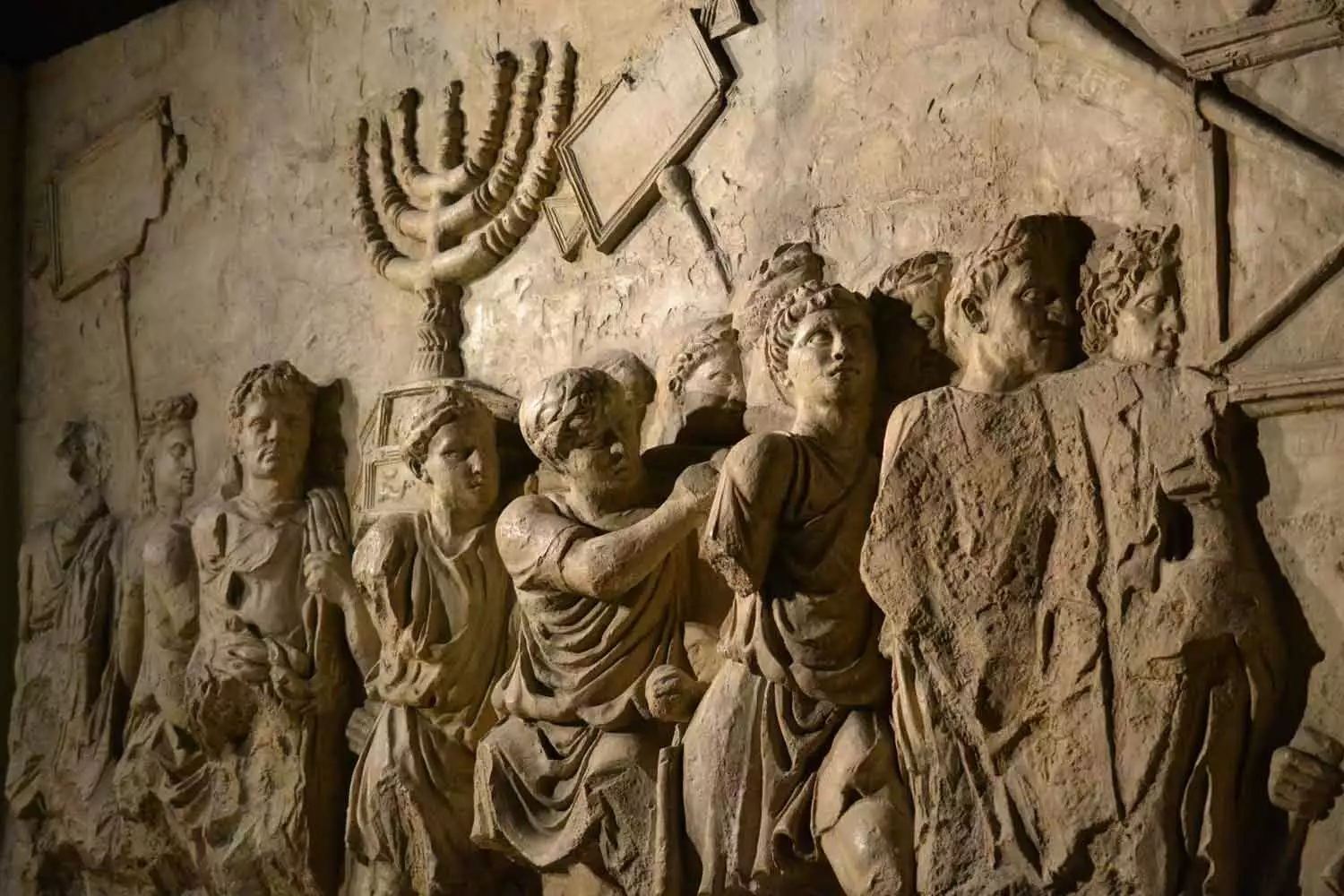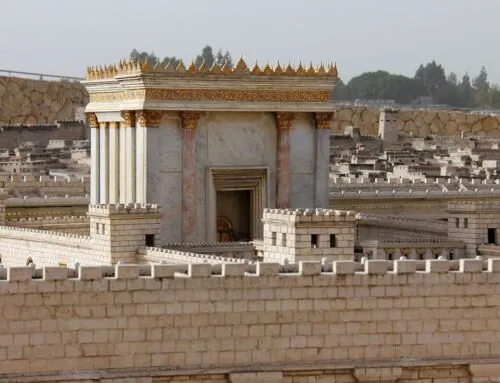When you visit the Holy Land you are confronted with many amazing ancient sites and relics and often times you hear them described as from particular eras of Israel’s history. For example, something from being from the Roman era or the Byzantine era. At certain parks, such as Meggido, you will see different layers that depict different eras of Israel’s history.
But what are these eras of Israel’s history? Today we will break them down for you, era-by-era!
The Canaanite Era (3300-1000 BC)
The Canaanites ruled the land from 3300-1000 BC. During this time there was also some ruling of the Egyptians in the area. This period of time would have been when the patriarchs of the faith lived, such as Abraham and Jacob. This is also the time that Moses led his people into the Promised Land of Israel.
Other names this is referred to as:
Bronze Age , Late Bronze Age (1600-1150 BC)
What You Can See from This Period:
Abraham’s Gate in Tel Dan
An Ancient Tempe in Laish
Various Ruins such as Megiddo
Shiloh
The Israelite Era (1000-732 BC)
Of the eras of Israel’s history, this one of course means a tremendous amount to not on Israel as a nation, but also to the faith’s of Christianity and Judaism. During this time the Kingdoms of Israel and Judah flourished in the region and the First Temple was built. This is when King David took Jerusalem.
Other names this is referred to as:
Iron Age 1 (1150 BC-950 BC), Iron Age II (950 BC- 587 BC)
What you can See from this Period:
Beit She’an
The Assyrian and Babylonian Eras (732-539 BC)
This era began during the rule of King Pul and is detailed in 1 Chronicles 5:26. The Bible says that this was in response to constant warnings to the people of Israel that their sinful ways had to stop. By 582 BC the kingdoms of Israel and Judah had been defeated.
It was during this time that the “first diaspora” occurred and the destruction of the First Temple. Diaspora is when the Jewish people have been scattered from Israel, such as this incidence, or again during the Roman period.
Other names this is referred to as:
Iron Age 2 (950 BC-587 BC)
What you Can See From This Era:
The Siloam Tunnel
Various Artifacts in the Israel Museum
The Persian Era
Eventually the Jewish people do get to return to their country, when Cyrus the Great, the Persian emperor conquered the land. He allowed them to return and ordered for the rebuilding of the Temple, which brings about a secondary marking of time, known as the “Second Temple Period”.
During this time Judah becomes an administrative division of the Persian Empire. Jerusalem was a small town at this point, with people likely only around in association with the Temple, which was rebuilt by about 515 BC. During this time, though they were no longer ruling the area, the area was largely governed by Persian-appointed governors, mostly Jewish, and was a theocracy ran by the Temple priests.
During this time, conversations begin to take place in Aramaic more, with Hebrew still used for religious matters.
What You Can See from This Era:
Persian Military Base in Northern Israel
The Hellenistic Era
Alexander the Great’s eyes turned toward the land and he defeated the Persians to take over the region. This led into a rapid turnover of constant conquering. First taking place when Ptolomy 1 Soter conquered Alexander’s heirs for the land and then Antiochus III the Great defeated Ptolomy’s dynasty. This is also the time that the Maccabees revolted and restored the Temple, which is still celebrated in Chanukah.
What You Can See from This Era:
The Early Roman Period (37 BC- 135AD)
This era is mostly marked by King Herod taking control of the area under the authority of the Roman Emperor. This is the time that Jesus was born, lived and died. This is also when the Jewish Revolt occurred which led to the destruction of the Temple again, as predicted by Jesus. During this period the Second Diaspora occurred, which lasted 2,000 years.
What You Can See from This Era:
City of Magdala
Capernaum
Many others!
Late Roman Era (135-324)
The Romans continued to rule the land during this time. By this time Jews had largely disbursed in the area as the Temple was no longer the center of worship but instead shifted to following particular Rabbinic authority. During this time, 313 AD, Roman became Christian when Constantine issued the Edict of Milan.
Other names this is referred to as:
Yavne Period
What You Can See from This Era:
Valley of Elah Roman Road
Byzantine Era (324-638)
This era of history finds the country heavily influenced by Christian belief as the faith grew. The Church of the Nativity and the Church of the Holy Sepulcher were built during this period. What many don’t realize is that for a period of time, the Emperor Julian reversed to establishment of Christianity. During this time Julian said that the Jewish people could return to Jerusalem to rebuild the Temple around 361AD. It never came to pass though as he died within three years and Christianity rose again.
What You Can See from This Era:
Church at Shiloh
Beit She’an
The Arab Celiphate Era (638-1099)
This was the start of Muslim rule in the Holy Land.
What You Can See from This Era:
The Dome of the Rock
The Crusader Era (1099-1260)
This era of the history of the Holy Land is by far among the most controversial. The crusaders took control of Jerusalem to establish it as a Christian nation.
What You Can See from This Era:
Nimrod’s Fortress
Church of St. Anne
The Mamluk Era (1260-1517)
Mamluk were actually slave- soldiers, taken from their families to serve in armies. They were surprisingly able to establish their own dynasty after defeating the Crusaders. This time is when the city took on a more muslim influence in architecture. During this time, Jerusalem shrank considerably in population and political prominence, however it did gain considerable importance in the Muslim religion and became the focus of their pilgrimages.
What You Can See from This Era:
Various pottery and artifacts in the Israel Museum.
The Ottoman Era (1517-1917
Much of what we know of the Old City comes for this period, built by Sulimen the Magnificent. He rebuilt the gates and walls of the Old city as we see them today. Also during this time, Napoleon fought and seized Acre.
Towards the end of this era, the Zionist movement began and groups of Jewish people began to move back to Israel from around the world.
What You Can See from This Era:
The British Mandate (1917-1948)
The British took control of the area following the collapse of the Ottoman Empire after WWI. This eventually led to, after the 2nd World War, the British terminated their mandate over the region and Israeli Independence began.
What You Can See from This Era:
All the cats. There were virtually no cats in the area until the Brits brought them in to deal with the rodent problem. The cats still are feral throughout the country today.
The Modern State of Israel (1948-Present)
Independence in Israel began in May of 1948, bringing a culmination to the eras in Israel’s history. Since then, the country has grown in economic and social prominence. Israel has been through many wars and concerns and now Coronavirus, but it still is a miracle it exists!
What You Can See from This Era:
Tel Aviv. A modern city built on ingenuity.
The Temple Periods as Eras in Israel’s History
While the above eras are the definitive political eras, there are two other periods that are of great importance, the Temple Periods.
The First Temple Period is from about 1006 BC-586 BC and marks the Temple built by Solomon.
The Second Temple Period is from 597BC-70 AD and marks the rebuilt Temple after being destroyed.
Next time you are in Israel and an era is mentioned, remember this list and have the timeline of the eras of Israel’s history in your mind!







